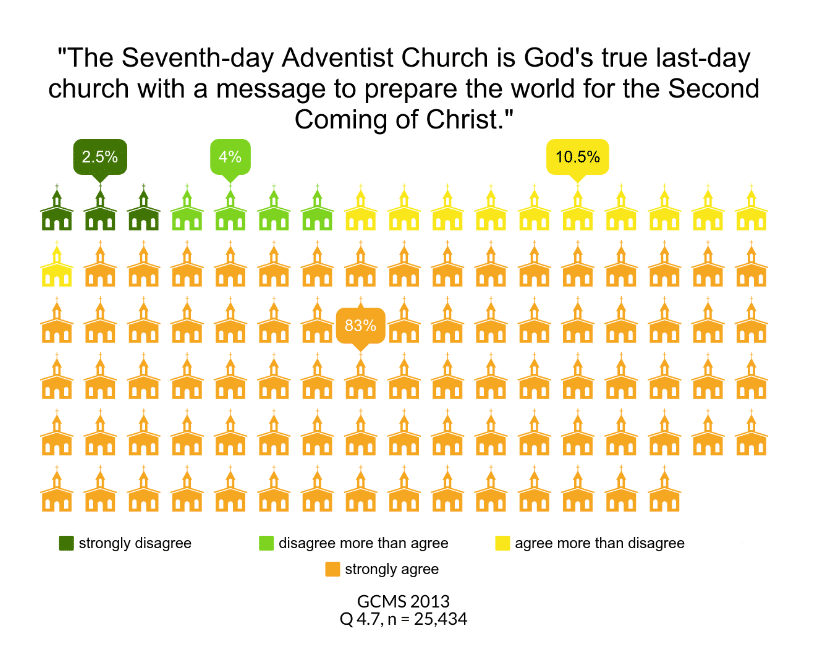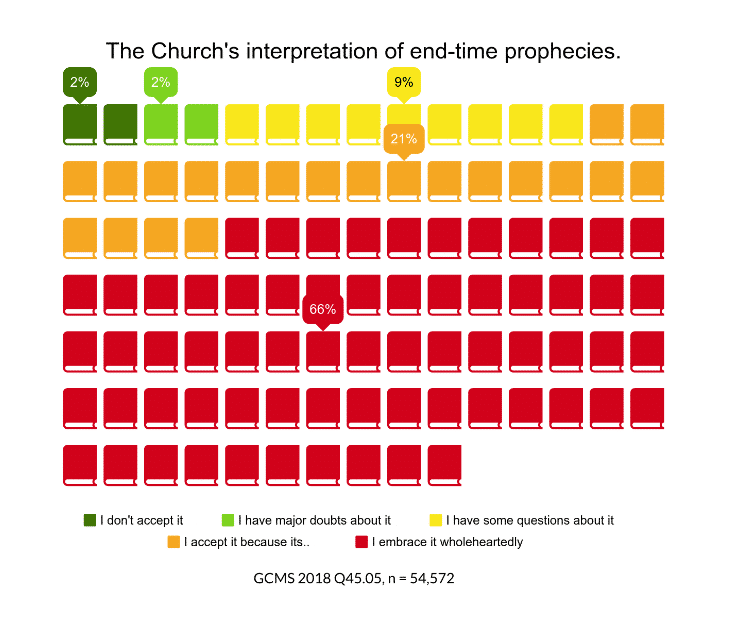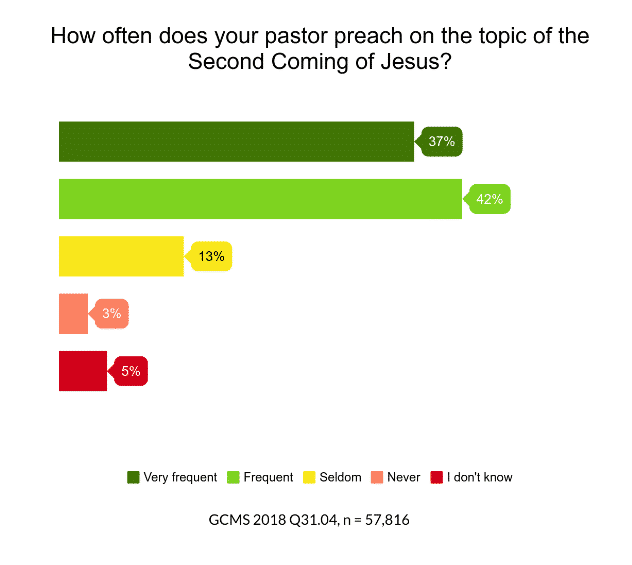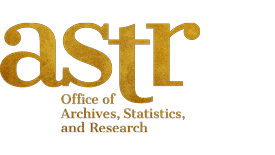See that no one leads you astray. For many will come in my name, saying, ‘I am the Christ,’ and they will lead many astray. And you will hear of wars and rumors of wars. See that you are not alarmed, for this must take place, but the end is not yet. For nation will rise against nation, and kingdom against kingdom, and there will be famines and earthquakes in various places. All these are but the beginning of the birth pains.
(Matthew 24:4-8)
Looking ahead to the end times and the Second Coming of Jesus has been a focus of the Adventist Church since its conception. We are, after all, called Seventh-day Adventists for a reason!
In our last blog we looked at global views on the Second Coming of Jesus and saw that a majority of Adventists around the globe (93%) believes that the “fulfillment of prophecy and events in the world indicate that Christ’s coming is very near” (Q42.09). However, do they understand end-time prophecies? Do they feel an urgency to prepare for the Second Coming of Jesus?
These questions become even more relevant, as we discovered that only about half of all 2018 Global Church Member Survey (GCMS) respondents strongly agreed (33.7%) or agreed (21.9%) that they believed Jesus would return in their lifetime.
Even though the timeline of Jesus’ return is unclear, an overwhelming majority (83%) of respondents in the 2013 GCMS indicated that they believe that the Seventh-day Adventist church is God’s true last-day church and possesses a message to prepare the world for the Second Coming of Jesus Christ.

In 2018, an updated version of the GCMS, asked church members from around the world about their acceptance of the Church’s interpretation of end-time prophecies (Q45.05). Two thirds of respondents stated that they embrace these teachings wholeheartedly. About one in ten (9%) of survey participants have some questions, but 4% have major doubts or don’t accept these teachings/interpretations at all.

These results indicate that a majority of Seventh-day Adventists accepts the Church’s interpretation on end-time prophecies; they also accept that our Church is God’s last-day church with a message for the world; and they believe that the fulfillment of prophecy and events in the world indicate that Christ’s coming is very near.
We may ask, what could be the reason that only half of all 2018 GCMS respondents believe that Jesus would return in their lifetime? Do they still feel an urgent need to prepare for the Second Advent? The survey asked them how often they hear sermons about the Second Coming of Jesus (Q31.04). Virtually eight out of ten report hearing sermons on this topic frequently or very frequently, though a significant number (13%) stated that they seldom hear such sermons. While it is encouraging that many Adventists worldwide are being reminded of the good news of the Second Coming of Christ, this topic must be addressed frequently by pastors and elders in all churches so that all members can be reminded of the coming hope: what Adventists for much of our history have called “the blessed hope.”

It is true, the Bible tells us that “… no one knows the day or the hour “(Matt. 24:36) of Jesus’ return, but let’s not lose our perseverance in sharing the Gospel, so that many people can be brought to Jesus. We must not lose our excitement and anticipation at being in the presence of our Lord for eternity.
It is the priviledge of every Christian, not only to look for, but to hasten the coming of our Lord Jesus Christ. Were all who profess His name bearing fruit to His glory, how quickly the whole world would be sown with the seed of the gospel.
(Ellen White, Evangelism, 696)
For more data on the 2013 GCMS, look at the Church Member Research Reports by Division and for more data on the 2018 GCMS, look at the following presentation by Dr. David Trim from the Office of Archives, Statistics, and Research: 2018 Annual Council – Global Church Member Survey Data Report and also at the GCMS Meta-Analysis Report.
blog written by Manuela Coppock
Created in collaboration with the Institute of Church Ministry

